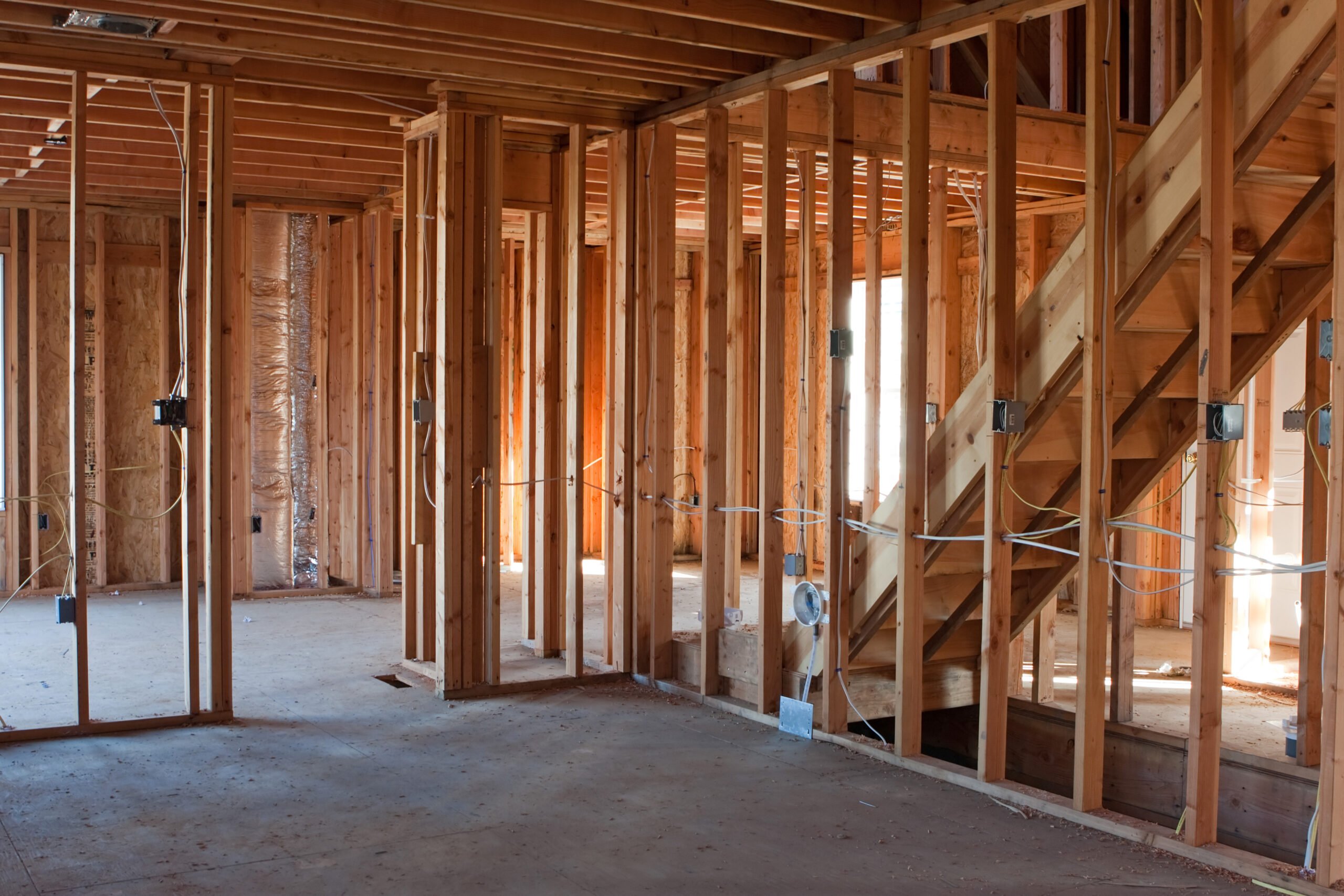For real estate investors, fix and flip projects can be one of the fastest ways to build capital and scale a portfolio. Flip investors, a category of real estate investors, specialize in buying, renovating, and reselling properties for profit. But before breaking ground on your next renovation, it’s crucial to understand what lenders look for when approving a fix and flip loan.
Fix and flip loans are short-term financing options designed to help investors acquire and rehab distressed or undervalued properties, then sell them for a profit. These loans serve as a strategic tool within the broader context of real estate investment, supporting investors in maximizing returns through property renovation and resale. Unlike traditional bank loans, these are built for speed, flexibility, and high leverage—perfect for investors who need quick access to capital. Hard money loans are a common choice for fix and flip financing and do not require traditional bank approval processes.
Introduction to Fix and Flip Loans
Fix and flip loans are a specialized form of short-term financing designed to help real estate investors purchase, renovate, and quickly resell properties for a profit. These flip loans are tailored for those looking to take advantage of opportunities in the real estate market, especially when properties need significant updates or repairs. With flexible financing options and competitive interest rates, fix and flip loans make it possible for both experienced investors and newcomers to access the capital they need to move fast on promising deals. Whether you’re looking to scale your portfolio or break into house flipping, these short term financing solutions can help you maximize returns and stay competitive in a dynamic market.
Typical Fix and Flip Loan Requirements
While requirements can vary depending on the lender and the scope of the project, most fix and flip loans follow a similar structure. Here’s what investors can generally expect:
Loan-to-Cost (LTC): Up to 93.5%
Loan-to-Cost (LTC) is a key metric, but lenders also use the loan-to-value ratio (LTV) to determine lending limits. The LTV is calculated by dividing the loan amount by the property’s appraised value, and for fix and flip loans, it typically ranges from 65% to 75%. The loan amount is determined based on the lower of the LTV, LTC, or after-repair value (ARV), ensuring the loan does not exceed the property’s worth or project cost. Understanding your loan balance in relation to LTV and LTC is important, as it affects how much funding you can obtain and your repayment obligations.
Loan Term: Up to 24 months
The loan term refers to the duration of the loan, and it is important to ensure the term aligns with your project’s timeline and exit strategy. The interest rate is another key factor, as it directly impacts the overall cost of the fix and flip loan and should be carefully considered when evaluating financing options.
Down Payment: Typically 10%–20%
The down payment is usually calculated as a percentage of the total project cost or the property’s purchase price, depending on lender requirements. In addition to proof of funds and reserves, borrowers should also be prepared for closing costs, which include origination fees and other upfront charges that can affect the project’s profitability.
At a high level, this is how a flip loan work: Lenders evaluate key metrics such as LTV, LTC, and ARV to determine eligibility and loan structure. The process typically involves application, approval based on these ratios, and funding, with the loan amount, loan balance, loan term, interest rate, down payment, and closing costs all playing crucial roles in the overall financing and success of the project.
1. Property Type
Single-Family Residences (1–4 units)
Multifamily Properties (up to 20 units)
Planned Unit Developments
These property types are ideal because they offer strong resale potential and are easier to evaluate for after-repair value. Fix and flip loans are primarily used for residential properties and investment properties. Residential properties are homes intended for people to live in, while investment properties are purchased with the intent to renovate and resell for profit. Commercial real estate, such as office buildings or retail spaces, is typically financed through other loan products rather than standard fix and flip loans.
2. Loan Amounts and Leverage
Loan Amounts: $100K – $5MM
Loan-to-Cost (LTC): Up to 93.5%
This means investors can secure most of the project cost through financing, preserving more cash for future deals. The purchase price, which is the amount paid to acquire the property, plays a key role in determining loan eligibility and is a major component of project costs. The total project cost includes both the purchase price and renovation expenses, and lenders use this figure to calculate financing terms. The loan to cost ratio (LTC) compares the loan amount to the total project cost, helping lenders set borrowing limits for investors. The maximum loan-to-value (LTV) ratio for fix and flip loans typically reaches up to 90%, providing substantial leverage for investors.
3. Loan Terms
Up to 24 months
Fix and flip loans are structured for short-term projects, giving investors enough time to complete renovations and sell without being locked into a long-term commitment. Some lenders provide fix and flip loans with no prepayment penalties, allowing borrowers to pay off loans early without incurring extra fees. In many cases, borrowers can pay off the loan balance early, offering flexibility to finish and exit projects on their own timeline. Some fix and flip loans may require a balloon payment at the end of the loan term, where a large lump sum is due after making smaller payments throughout the period. Additionally, interest only payments are often available during the loan term, which can help manage cash flow during renovations by reducing monthly carrying costs.
4. Credit & Financials
While credit score requirements are often more flexible than traditional loans, lenders still look for:
A reasonable credit profile (typically 620+ for competitive terms). Lenders evaluate both your credit score and your credit history to assess your reliability in repaying debts. For many fix and flip loans, your personal credit is especially important if you are a first-time investor or seeking a smaller loan. Having good credit can help you secure better loan terms and lower interest rates, though some lenders may work with borrowers who have less than perfect credit, especially if they have relevant experience or a strong project plan. Some lenders may also consider your personal assets as part of the qualification process or require them as collateral for the loan.
Proof of funds for the down payment or reserves
A clear plan to execute and exit the project. Liquid reserves are often required to qualify for fix and flip loans, typically covering six months to two years of project payments.
5. Experience & Project Feasibility
Both experienced real estate investors and first-time house flippers can qualify for fix and flip loans. Working with a specialized flip lender offers advantages such as quick decision-making, transparent communication, and loan options tailored to the needs of real estate investors and house flippers, increasing the likelihood of project success. Lenders want to see:
A realistic scope of work
A clear budget and timeline
After-repair value (ARV) supported by comps or appraisals. A 15–20% budget buffer may be necessary to account for unexpected renovation expenses.
6. Fast Closings
Hard money lenders are able to offer loans with fast closings, making them a preferred choice for time-sensitive fix and flip projects. Speed is a major advantage of fix and flip financing. Many deals can close in just a few weeks—allowing investors to secure properties quickly and start renovations without delay.
Renovation Costs and Plans
A successful fix and flip project hinges on accurately estimating and managing renovation costs. Before securing financing, investors should develop a comprehensive renovation plan that details every aspect of the project—from materials and labor to permits and contingency funds. Flip lenders typically require this plan as part of the loan application, as it demonstrates your preparedness and helps ensure the project stays on budget and schedule. By outlining all anticipated expenses and setting a realistic timeline, you can avoid costly surprises and increase your chances of a profitable flip. Careful planning and diligent management of renovation costs are essential for making your fix and flip project a success.
Property Conditions and Restrictions
Fix and flip loans can be used to acquire properties in a wide range of conditions, from homes needing only minor updates to those requiring extensive repairs or even full-scale reconstruction. However, not all properties are eligible for flip loans. Some lenders may place restrictions on properties with significant environmental issues, structural problems, or those located in certain neighborhoods or regions. It’s important for investors to review the specific guidelines of their fix and flip loan to understand any property-related limitations. Additionally, tackling properties in poor condition can present unique challenges, such as unexpected repair costs or the need for specialized contractors, so thorough due diligence is essential before moving forward.
Flip Financing Options
Real estate investors have several flip financing options to choose from, each with its own advantages and requirements. Hard money loans are a popular choice for fix and flip projects, offering flexible financing terms and rapid approval—ideal for investors who need to act quickly. Private money loans can provide competitive interest rates and more personalized terms, though they may require a stronger credit profile or established relationships. Traditional bank financing is another option, but it can be harder to obtain for those with less than perfect credit or limited experience in real estate investing. By exploring all available flip financing options, investors can select the best fit for their financial situation and investment strategy, ensuring they have the resources needed to complete their flip project successfully.
Fix and Flip Market and Opportunities
The fix and flip market presents a wealth of opportunities for real estate investors willing to identify undervalued properties and transform them into desirable homes. By leveraging fix and flip strategies, investors can purchase distressed properties at a discount, renovate them, and resell for a profit. The market is dynamic, with trends and opportunities shifting based on local demand, housing inventory, and economic conditions. Staying informed about the latest developments in the real estate market allows investors to spot emerging opportunities and adapt their approach. Whether you’re an experienced investor or just starting out, the fix and flip market offers the potential for significant returns for those who are proactive and strategic in their investments.
Why Choose Nvestor Funding
Nvestor Funding offers fix and flip loans designed for active investors—whether you’re taking on your first rehab or scaling a portfolio. With high leverage, competitive rates, and fast closings, we make it easier to move from offer to renovation to sale.
High LTC financing
Streamlined approvals
Flexible credit requirements
Funding for both purchase and rehab
We also offer rehab loan options to help investors finance renovations efficiently. Our competitive rates stand out compared to the high interest rates often found with other lenders. Nvestor Funding can help you compare alternative financing options such as home equity loan, home equity line, personal loan, business line, and seller financing to find the best fit for your project.




